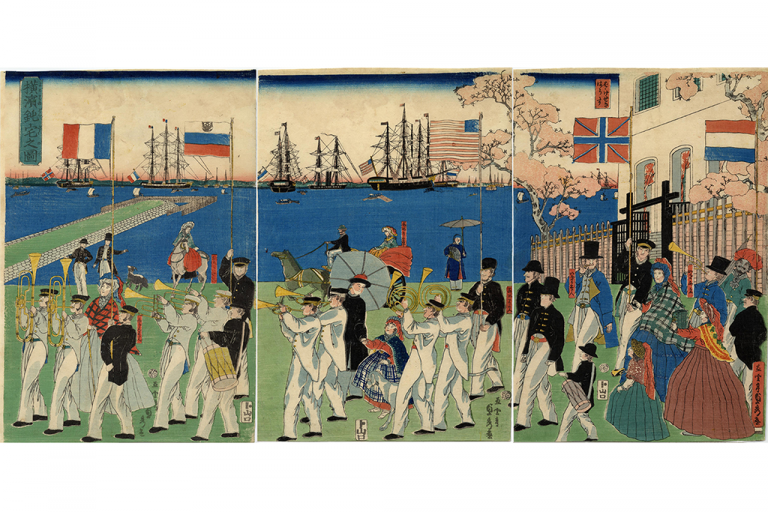In this edition of the collection exhibition, overlapping with the anniversaries of the Yokohama Museum of Art and the opening of Yokohama Port, we reexamine the relationship between Japan and the West, which serves as one of the central pillars for Yokohama’s collection of artworks. Many exhibitions dealing with the opening of Yokohama Port focus on the reception and development of Western-style expressions in the late Edo (1603-1867) and Meiji Periods (1868-1912) or the activities of painters, printmakers, and photographers who came to Japan during this era. However, in this exhibition, which is not restricted to any one age, we concentrate on several topics related to the way in which different cultures resonated with each other during the lengthy period that stretched from the opening of Yokohama Port in 1859 to the post-World War II era.
In post-World War I Paris, a period that corresponds to closely to the works now on view in the “Masterpieces from the Musée de l’Orangerie, Jean Walter and Paul Guillaume Collection” exhibition, artists such as Fujita Tsuguharu and Hasegawa Kiyoshi were pioneering their own forms of creative expression. Another figure of the day was Natori Yonosuke, who launched the propaganda magazine “Nippon” after absorbing and enacting new theories of German design, including those of Bauhaus. Traces of Japanese and nikkei (Japanese immigrant) artists’ work can also be found in the U.S., which faced with a certain amount of conflict in regard to the country’s multiethnic society.
After World War II, a period which saw a sudden acceleration in transport services and information media, there was an emergence of art movements that shared a common awareness while exerting a mutual influence. This is exemplified by the relationships between Art Informel in France and Gutai in Japan, and the American Neo-Dada movement and the Japanese Neo Dadaism Organizers. Another keyword here is woodblock prints, as seen in the display of works by Paul Jacoulet, a Japan-based painter who embraced the ukiyo-e tradition, and Yoshida Hiroshi, who strategically targeted foreign audiences with an up-to-date version of Japanese prints. Tucked in between these various topics, you will find several other displays, such as “Yokohama Ukiyo-e” and “Meiji Photography,” which include many new acquisitions. Rather than a single full-length offering, this exhibition is made of a number of shorter parts, so please relax and enjoy your visit as you stroll through the galleries.
After leaving the collection exhibition, please make your way downstairs to Art Gallery 1, where “Following the Path of Commodore Perry’s Arrival through Images” will be on view through November 10. This exhibition focuses on depictions of historical events, centering on the work “Commodore Perry Coming Ashore at Yokohama.”
The exchange between Eastern and Western culture that began in 1859 has borne a diverse range of fruit. These two exhibitions, drawn from the Yokohama Museum of Art collection, provide an opportunity to reconsider the opening of Yokohama Port as the start of a fertile and vibrant history that continues to this day.
